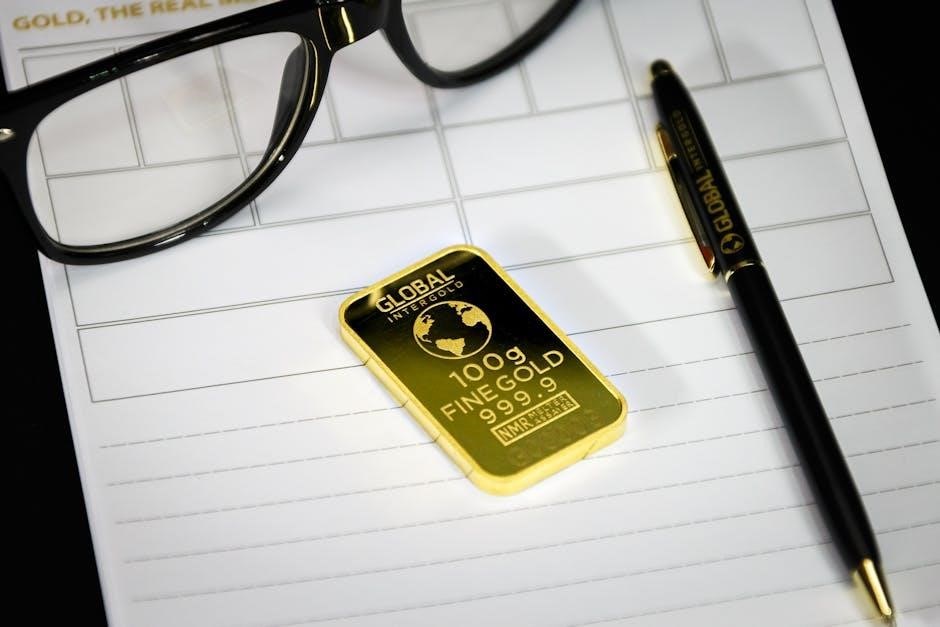haydn trumpet concerto pdf
Haydn Trumpet Concerto PDF⁚ Availability and Versions
Numerous online sources offer free PDF downloads of the Haydn Trumpet Concerto in E-flat major, Hob. VIIe⁚1. Variations exist in instrumentation and arrangements, affecting the overall sound and difficulty.
Sources for Free Sheet Music Downloads
Several websites provide free downloads of Haydn’s Trumpet Concerto in PDF format. These include Petrucci Music Library, IMSLP (International Music Score Library Project), and Free-scores.com. These platforms offer various versions, potentially differing in editing, arrangement, and included parts (solo trumpet, full orchestral score, piano reduction). Always verify the source’s reputation and legitimacy before downloading. Be aware that quality and accuracy can vary between uploads; some may be more reliable or professionally edited than others. Check user reviews and ratings if available to gauge the suitability of a particular score. Remember to respect copyright where applicable, even for free downloads; some versions may have specific usage restrictions. Explore multiple sources to find a version that best suits your needs and skill level.
Variations in Instrumentation and Arrangements
The availability of the Haydn Trumpet Concerto in various arrangements contributes to its enduring popularity. While the original scoring likely featured a solo trumpet with strings and winds (including horns, bassoons, and perhaps timpani), numerous transcriptions exist. Some versions simplify the orchestral accompaniment for educational or performance purposes, offering reduced scores for piano or smaller ensembles. Others adapt the solo trumpet part for different instruments, such as the Bb trumpet (as opposed to the original Eb). These arrangements cater to various skill levels and performance contexts, making the piece accessible to a wider range of musicians. The choice of version depends on individual needs and preferences, impacting both the technical demands and the overall sonic character.
Different Editions and Transcriptions
The Haydn Trumpet Concerto’s enduring appeal is reflected in the diverse editions and transcriptions readily available. Scholarly editions often prioritize historical accuracy, meticulously reconstructing the original score based on available manuscripts and early printed sources. These editions might include critical notes and commentary on compositional choices. Conversely, practical editions frequently prioritize playability and accessibility, often simplifying passages or adapting the solo trumpet part for instruments like the more common Bb trumpet. Furthermore, reductions for piano or smaller ensembles are common, enabling wider performance access. The choice of edition significantly impacts the performer’s experience and the overall musical outcome, influencing both interpretive possibilities and technical challenges.
Analyzing the Haydn Trumpet Concerto
This section delves into the concerto’s authenticity, historical context, compositional style, and the technical demands it presents to performers.
Authenticity and Attributions
The authenticity of the Haydn Trumpet Concerto has been a subject of scholarly debate. While widely attributed to Joseph Haydn, some musicologists question its authorship due to stylistic inconsistencies compared to his other known works. The manuscript’s provenance and compositional style have been thoroughly examined, leading to various theories about its origins. Some researchers suggest that portions might be by other composers, possibly from Haydn’s circle, or even composed later and falsely attributed to him. The lack of definitive documentation further complicates the attribution process. Despite these uncertainties, the piece remains popularly associated with Haydn and continues to be performed and studied widely, its musical merits transcending any doubts surrounding its exact origins. Further research is ongoing, promising a clearer picture of the concerto’s true creator and historical context. The ongoing debate highlights the complexities inherent in attributing works in the pre-modern era, where documentation and transmission practices were less rigorous than those of later periods. The ongoing scholarly discussions underscore the dynamic and evolving nature of musical history and the enduring appeal of this captivating piece, regardless of its definitive authorship.
Historical Context and Compositional Style
The Haydn Trumpet Concerto, regardless of its definitive composer, reflects the late Classical period’s stylistic characteristics. Its composition likely occurred within the broader context of the flourishing Viennese musical scene of the late 18th century, a time when the trumpet was gaining prominence as a solo instrument. The work exhibits a clear understanding of the trumpet’s capabilities, employing virtuosic passages that showcase its range and agility while integrating it seamlessly within the orchestral texture. The concerto’s structure adheres to the standard three-movement form typical of Classical concertos—allegro, adagio, and allegro—with clear thematic development and formal coherence. The interplay between the solo trumpet and orchestra is masterfully balanced, showcasing both the instrument’s brilliance and the orchestra’s supportive role. Harmonic language and melodic invention align with typical conventions of the Classical style, characterized by elegant simplicity and formal clarity. The use of dynamics and orchestration contributes to the overall drama and expressiveness of the piece, further reinforcing its position within the late Classical tradition, whether truly composed by Haydn or another composer of that era.
Technical Challenges and Performance Considerations
Performing the Haydn Trumpet Concerto presents significant technical hurdles for trumpet players. The extended range demands exceptional breath control and stamina, particularly in the demanding passages that push the boundaries of the instrument’s capabilities. Accurate intonation is crucial, especially in the rapid scales and arpeggios. Articulation needs to be precise and nuanced, reflecting the composer’s intent. The extended high notes require a strong embouchure and efficient air support. Furthermore, the musical phrasing requires sensitivity and expressive control to convey the emotional depth of the piece. The cadenza, a significant improvisational section, demands a high level of musical creativity and technical proficiency. Collaboration between the soloist and conductor is vital for successful performance, ensuring a cohesive interpretation. Understanding the historical context and stylistic nuances is also important for a sensitive and informed performance, ensuring an authentic portrayal of the piece’s character.
Exploring the Music
The Haydn Trumpet Concerto’s melodic beauty and structural elegance captivate listeners. Its distinctive musical motifs and cadenza options offer diverse interpretive possibilities, enriching the musical experience.
Key Features and Musical Motifs
The Haydn Trumpet Concerto, while relatively short, is rich in musical ideas. Its E-flat major tonality creates a bright, celebratory atmosphere, characteristic of the Classical period. The first movement, Allegro, is driven by a strong rhythmic pulse and features memorable melodic lines in both the trumpet solo and orchestral accompaniment. Noticeable repeated motifs provide a sense of unity and cohesion. The slow movement, Adagio, offers a poignant contrast, characterized by lyrical melodies and expressive harmonies. Its melancholic mood serves as an emotional counterpoint to the vibrant energy of the outer movements. The final movement, Allegro assai, returns to the brilliance and energy of the opening, concluding with a triumphant flourish. These movements, together with their distinct features and recurring motifs, create a cohesive and emotionally resonant work.
Cadenza Options and Interpretations
A significant aspect of performing the Haydn Trumpet Concerto involves the cadenza, a virtuosic solo passage typically inserted towards the end of the first and/or third movements. Many editions provide a cadenza, often composed by the editor or a later composer. However, the original manuscript lacks a cadenza, leaving room for considerable interpretative freedom. Performers may choose to use an existing cadenza or compose their own, reflecting their individual stylistic preferences and technical capabilities. The choice of cadenza significantly impacts the overall interpretation of the concerto, affecting both the technical display and the emotional trajectory of the piece. Some cadenzas emphasize technical brilliance, showcasing the performer’s virtuosity. Others prioritize musicality and integration with the concerto’s thematic material. The possibilities are vast, leading to diverse performances of this beloved classical work.
Notable Recordings and Performances
The Haydn Trumpet Concerto, despite its relatively late discovery and questions surrounding its authenticity, boasts a rich history of recordings and performances. Many renowned trumpet players have tackled this challenging yet rewarding piece, resulting in a diverse range of interpretations. Recordings vary widely in terms of orchestral accompaniment, tempo choices, and cadenza selection. Some performances highlight the concerto’s lyrical melodies and elegant phrasing, while others showcase its virtuosic passages and technical demands. Exploring these different recordings provides invaluable insights into the multifaceted nature of the work and the artistic choices made by various performers and conductors. These recordings and performances serve as a testament to the enduring appeal and enduring popularity of the Haydn Trumpet Concerto. Listening to these versions offers a comprehensive understanding of its interpretive possibilities.
Further Research and Resources
Explore scholarly articles, online databases, and related works by Haydn and other composers for a deeper understanding.
Scholarly Articles and Analyses
Academic journals and music publications frequently feature in-depth analyses of Haydn’s Trumpet Concerto. These articles often delve into the piece’s historical context, exploring its compositional techniques and stylistic features within the broader framework of Haydn’s oeuvre and the Classical period. Researchers have debated the concerto’s authenticity and potential authorship issues, comparing it to other works by Haydn and his contemporaries. Detailed examinations of the score’s structure, harmony, and melodic content illuminate its musical intricacies. Scholarly articles also discuss performance practices, exploring the challenges posed by the original instrumentation and offering insights into various interpretations. These resources provide valuable perspectives for musicians and scholars alike, enriching their understanding and appreciation of this significant composition. Searching academic databases using keywords like “Haydn,” “Trumpet Concerto,” “Hob. VIIe⁚1,” “Classical period,” and “performance practice” will uncover a wealth of relevant material. Consult specialized music libraries and online archives for access to these scholarly publications.
Online Resources and Databases
The digital age offers numerous online resources for accessing information about and scores of Haydn’s Trumpet Concerto. Websites dedicated to classical music scores, such as IMSLP (Petrucci Music Library), often provide free downloads of the concerto in PDF format, sometimes in multiple arrangements or versions. These sites frequently include editorial notes and performance suggestions. Digital libraries affiliated with universities or research institutions may offer access to scholarly articles and analyses of the work. Databases like JSTOR or Music Index are invaluable tools for locating these resources. YouTube and other streaming platforms host recordings of the concerto, allowing for auditory exploration alongside the score. Searching online for “Haydn Trumpet Concerto PDF,” “Haydn Trumpet Concerto score,” or “Haydn Hob. VIIe⁚1” will yield diverse results, ranging from free scores to commercially available editions. Remember to check copyright information before using any online materials. Always verify the authenticity and reliability of the source before relying on its information.
Related Works by Haydn and Other Composers
Exploring works by Haydn alongside his Trumpet Concerto offers valuable context. Studying his other concertos, such as those for oboe, bassoon, or cello, reveals his compositional style and approach to the genre. Analyzing his symphonies and chamber music provides insight into his harmonic language and orchestration. Examining contemporary composers who wrote for trumpet, such as Leopold Mozart (father of Wolfgang Amadeus Mozart), allows comparison of trumpet writing styles across the period. Later composers, such as Hummel or even early Romantic composers, expanded upon the concerto form, offering a fascinating evolution to observe. Comparing these works highlights Haydn’s unique contributions and the broader context of his Trumpet Concerto within the history of the genre and within his own vast body of work. Delving into the works of other composers who wrote for similar instrumental combinations can provide a rich and rewarding comparative study. This comparative analysis enriches understanding and appreciation of Haydn’s Trumpet Concerto.
Related Posts

financial accounting spiceland 6th edition pdf
Need the Spiceland Financial Accounting 6th Edition PDF? Get instant access to clear explanations & practice problems. Ace your course with ease! ✨

pdf to ofx converter online free
Easily convert PDF files to OFX format online for free. No registration required, fast and secure conversion.

tu zona crypto book pdf
Dive into the world of cryptocurrency with our expert guide. Discover tips, tricks, and strategies for success in crypto trading and investing.